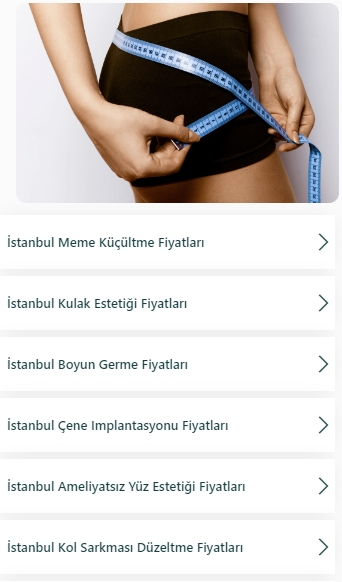
Fitotherapy: Herbal Health
- Fitotherapy: Herbal Health
- What is Phytotherapy?
- How is Phytotherapy Applied?
- Is Phytotherapy Safe?
- How to Approach Herbal Treatment?
As a newly emerging Phytotherapist, my aim is to address the questions that many individuals have in mind: What is Phytotherapy? How is it applied? Who is it intended for? Who practices this method? Why should it be chosen when modern medicine and chemical drugs are available? My goal is to shed light on these questions…
What is Phytotherapy?
Scientifically, 'Phytotherapy' is a treatment method where plants with proven medical and healing effects, whose chemical structure and content have been determined, and whose effective application methods have been identified, are utilized.
Phytotherapy, which does not disregard modern medicine, is not an alternative to modern medicine. It complements or supports modern medicine, and at times, can be used as a standalone treatment method...
The complementary use of Phytotherapy with modern medicine has been accepted by the World Health Organization (WHO). In recent years, it has gained increasing usage, particularly in Western countries such as Germany, France, and the Netherlands...
Traditionally, the approach of providing treatment when diseases and symptoms arise has evolved into preventive medicine in modern times. In the concept of preventive medicine, diseases are prevented before they start, and the progression of newly emerging chronic illnesses is slowed down, while progressive diseases are attempted to be controlled at an early stage. Phytotherapy plays an extremely effective role in achieving these goals.
How is Phytotherapy Applied?
Phytotherapy does not involve simple practices such as boiling and consuming various plants for different purposes or preparing mixtures like pastes from different numbers of medicinal plants. Such approaches do not adhere to the principles of true Phytotherapy!
Not every type of mint is medicinally useful, and similarly, not every type of chamomile serves medicinal purposes. Fruits, flowers, leaves, branches, stems, and roots of plants can be used in various ways and for different purposes. For instance, Tribulus Terrestris (puncturevine) contains substances suitable for medical use in its flowers, leaves, and stems (with effects such as increasing libido, enhancing sexual performance, and alleviating chronic energy deficiency), while its roots may contain toxins. Among numerous chamomile species, although they may appear similar, some possess medicinal properties, while others may be toxic (exhibiting insecticidal effects). Without proper preparation by experts, a seemingly beneficial plant can have entirely poisonous effects.
Hence, Phytopharmaceutical products have been developed. Active substances obtained by experts are processed into forms such as tablets, syrups, or creams for consumption.
Certain medicinal plants can be used through methods like brewing, while the essential oils contained in some plants find their application in Aromatherapy.

Is Phytotherapy Safe?
The effort required to obtain a 'Herbal Medicine' from a plant can often surpass the creation of medications containing pure chemicals. Production of herbal medicines necessitates maintaining all conditions under which the plant is cultivated in continuously optimal states. Factors such as soil mineral and water content, weather conditions, temperature, ultraviolet exposure, etc., need to be standardized at each harvest; this is a challenging and technology-intensive task. However, dosage adjustment can be achieved for the active substances contained in plants grown in this manner. If Phytopharmaceuticals are produced in tablet or capsule forms and meet necessary quality standards, they are highly safe. Consequently, their side effects are quite low, and desired results can be easily attained.
For example, to receive a therapeutic dosage of the 'lycopene' substance present in tomatoes for purposes such as maintaining prostate health, reducing collagen breakdown, benefiting from anti-cancer effects, or achieving smooth skin, one might need to consume several kilograms of natural and healthy (cultivated under harmless agricultural conditions and optimal circumstances) tomatoes daily. Yet, this requirement can be met with a single capsule produced by a manufacturer adhering to international standards.
How to Approach Herbal Treatment?
Similar to other medications, herbal medicines should also be used with appropriate indications considering the patient's symptoms, overall health status, and other ongoing treatments. Prior to initiating treatment, a comprehensive evaluation is crucial, and guidance should be provided by an expert Phytotherapist. Collaboration and information sharing with the patient's doctor are essential, and support from pharmacists and pharmacies can enhance the success of Phytotherapy.
For instance, while the cancer-preventive properties of turmeric are recognized, it cannot replace cancer treatments like chemotherapy or radiotherapy, and is not recommended during ongoing oncological treatment. However, its use is advised after completion of oncological treatment, at least 2 months later, and with consultation with the patient's oncologist.
Every substance consumed by the body undergoes a chemical process, whether good, bad, or neutral. Hence, it's crucial to understand that knowing the effects of certain plants alone might not suffice. Recommendations such as simply consuming, boiling, or smelling a plant might not be sufficient when considering the holistic evaluation of metabolism. For instance, Harpagoside (derived from Devil's Claw plant) has a potent anti-inflammatory property; however, if not presented in the form of an enteric-coated tablet to protect it from stomach acid, it may have no effect when passing through the digestive system.
In conclusion, utilizing the benefits present in plants to support modern medicine is a wise approach, and more favorable outcomes can be achieved by harnessing the power of plants. However, the most important aspect to emphasize here is that Phytotherapy must be practiced strictly based on scientific principles, under appropriate laboratory conditions, and by experts.






